

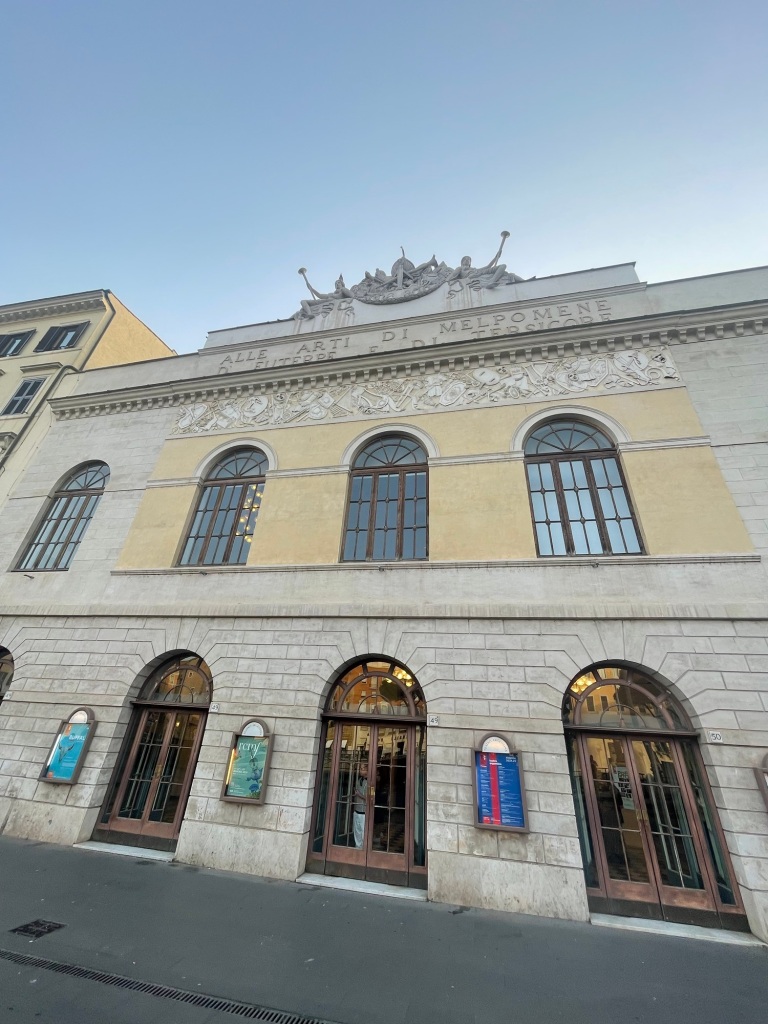
Roma Chamber Music Festival celebrates 21 years as the brain child of Robert Mc Duffie takes up residence again in the antique Teatro Argentina where Rossini’s Barber of Seville first saw the light of day .
Young musicians united from every denomination to make music together under renowned masters .

Tonight we were treated to Brahms early Serenade op 11 played by these youthful players but even their superb playing could not dissuade us from the fact that Brahms had been right to wait until maturity to reveal his true genius.

The second work ,that Liszt had dismissed so unexpectedly ,was Schumann’s crowning glory after a lifetime of writing for only solo piano.His Piano Quintet op 44 was played by master players .
Lucchesini’s measured but masterly poetic playing was even outshone by the sublime beauty and aristocratic musicianship of Enrico Dindo.I have heard many great pianist play the Schumann Quintet that together with Brahms Quintet op 34 are the two major chamber works for piano and string quartet.
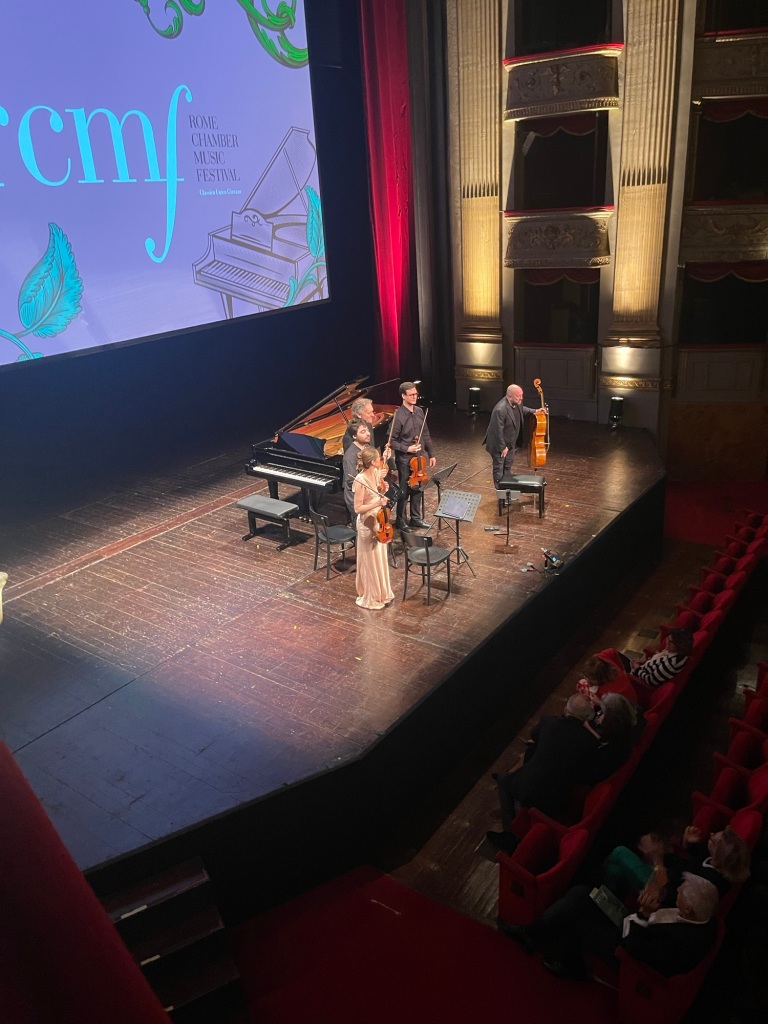
I remember listening to Rubinstein play both in the same programme together with the Fauré C minor quartet when he was well into his ‘80’s and had decided to play more chamber music during his Indian Summer.Of course he had fallen in love with Guarneri Quartet and it was a mutual love affair that they shared for some years with the world. Rubinstein came running on stage and immediately began the Schumann much to the surprise of his much younger colleagues who were still catching their breath!Remarkable performances that like today were played with five players that were listening to each other and weaving in and out with chameleonic drive.Andrea Lucchesini has matured since winning the Dino Ciani competition and being promoted by his teacher Maria Tipo and also Luciano Berio.I remember Cherkassky being very impressed by a young boy playing to him at Berio’s house when he had given a recital the day before in nearby Empoli – the birth place of Busoni. Andrea is a true musician who listens to himself – something so rare these days according to Shura.Joined by equally masterly colleagues they were watching each other waiting to pounce or enter places where lesser mortals dare to tread.There was a continual movement of all players like riding on a wave – unified and of celestial sounds contrasted with passionate outbursts and quite considerable virtuosity in the Scherzo.
I had been made aware a few years ago of this continual cat and mouse movement in Budapest when Peter Frankl gave what was to be his last public performance with the other two great Piano Quintets with a group of musicians ready to pounce with a electric hypnotic zeal as today .https://christopheraxworthymusiccommentary.com/2021/11/27/peter-the-great-peter-frankl-with-the-kelemen-quartet-in-budapest/

I had been at the Dindo brothers Wigmore debut in London many years ago and it has been wonderful to watch in particular Enrico mature into the great artist that he has become today.There were moments in the second movement of quite breathtaking beauty from the ‘cello that I had never been aware of before.The sublime beauty and passionate response from the viola of Leonardo Taio was matched by the violins of Amber Emson Leoni and Sebastian Zagame.What a wonder it was too to see Andrea looking at his colleagues rather than the score as the ravishing delicacy in the last movement reached celestial heights.It contrasted with the rather over zealous precision of the little fugato that shows its head for a moment before bursting into the radiant song from Andreas magic hands.A remarkable performance and obviously a remarkable instrument prepared by that other great magician Mauro Buccitti the technician for Alfonsi Pianos.
Wonderful players,sumptuous selfless music making in one of the most beautiful theatres in the world in certainly the most Eternally beautiful of cities.To leave such beauty exhilarated and uplifted and to find the warm evening air to embrace you makes ‘Music not War’ spring to mind and long for the music never to end.
The McDuffie Scholars are from many differing ethnic backgrounds and we were sitting on the site where Julius Cesar had met his political demise!
Will we never learn!
‘If Music be the Food of Love – Play On ‘ The ‘Bard’ was always right .
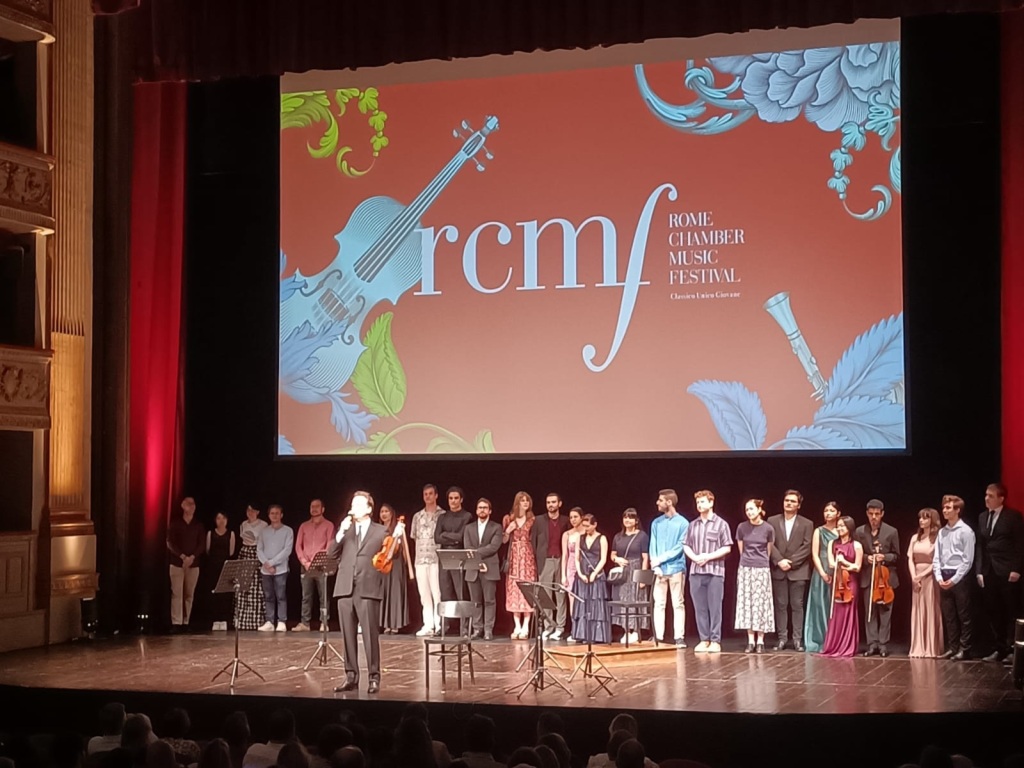

Andrea Lucchesini the supreme stylist conquers all in Ninfa
Five players that played as one and could hold this high society audience spell bound wanting to applaud after each movement such was the jewelled perfection of these master musicians .
Andrea Lucchesini ‘ Giovani Artist dal Mondo’ Scuderie del Castello Caetani.’The Hills Resounding to the Sounds of Music’
Rome Chamber Music Festival 2024

Where history meets the future of classical music.
The Rome Chamber Music Festival returns to Teatro Argentina June 17-20 , 2024 .Now in its 21st year, the Rome Chamber Music Festival has delighted audiences with carefully curated programs framed by the majesty of the Eternal City.
This was last years’ festival : https://christopheraxworthymusiccommentary.com/2023/06/14/rome-chamber-music-festival-superb-music-making-returns-to-teatro-argentina/
Acclaimed classical stars join 32 young artists and young professionals – stars-in-the-making – to perform the beloved masterpieces of Vivaldi, Brahms, Schumann, Copland and Dvorak as well as contemporary icons Philip Glass. André Gagnon, Mark O’Connor, and Italy’s own rock music sensation, MÅNESKIN.
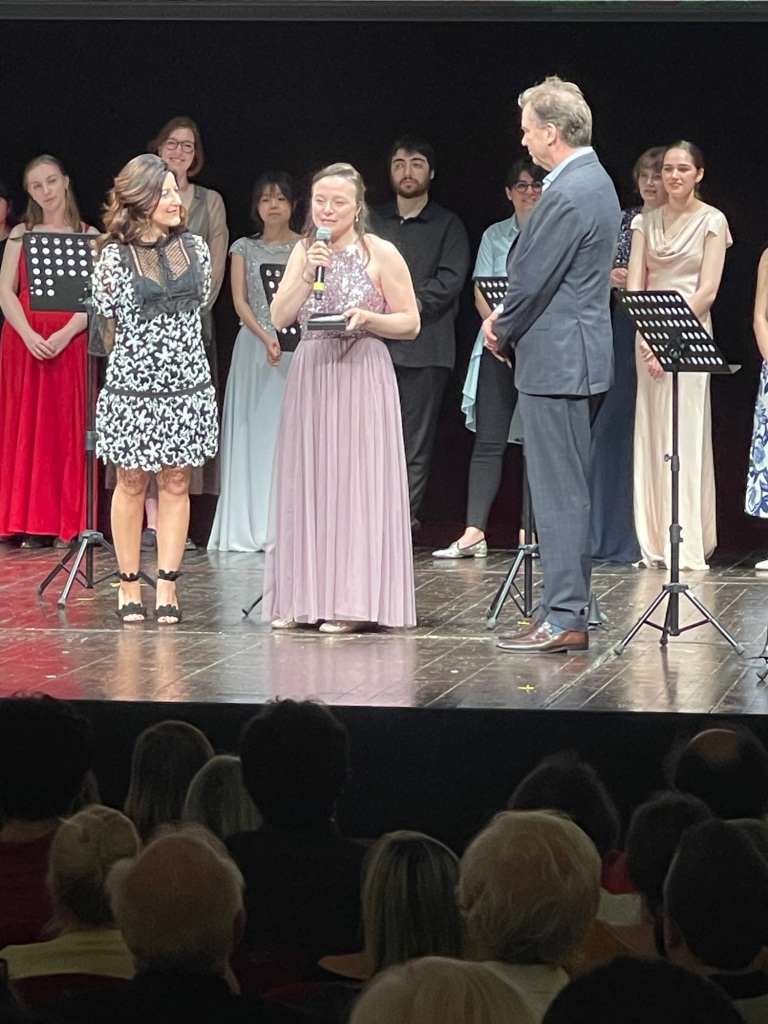

De Simone Young Artist Programme
Dedicated to nurturing new talent, the Rome Chamber Music Festival invites each year a select number of promising music students under the age of twenty-five from the United States, Europe, and Asia to take part in its De Simone Young Artist Program. American participants were selected through auditions at the Robert McDuffie Center for Strings at Mercer University, and European and Asian participants were selected from video auditions and evaluated by Jacopa Stinchelli and committee, with final approval by Robert McDuffie. This year the Festival welcomes 32 participants to the program.
Access to world-renowned artists and the opportunity to perform alongside them is invaluable to a young musician’s professional growth and aspirations.

Steven Della Rocca Young Professional Programme
The Steven Della Rocca Young Professional Program was established by longtime friend and board member Courtenay Hardy in memory of her husband Steven Della Rocca, who was an ardent supporter of education, the arts, and the Festival. The Steven Della Rocca Young Professional Program aims to provide mentoring and employment opportunities to these artists who are beginning their careers and attempting to establish their livelihoods during these challenging times. The Festival is privileged to honor Steve’s legacy by fostering the next generation of great performers. This year, the Festival is pleased to welcome nine talented performers of the Steven Della Rocca Young Professional Program.
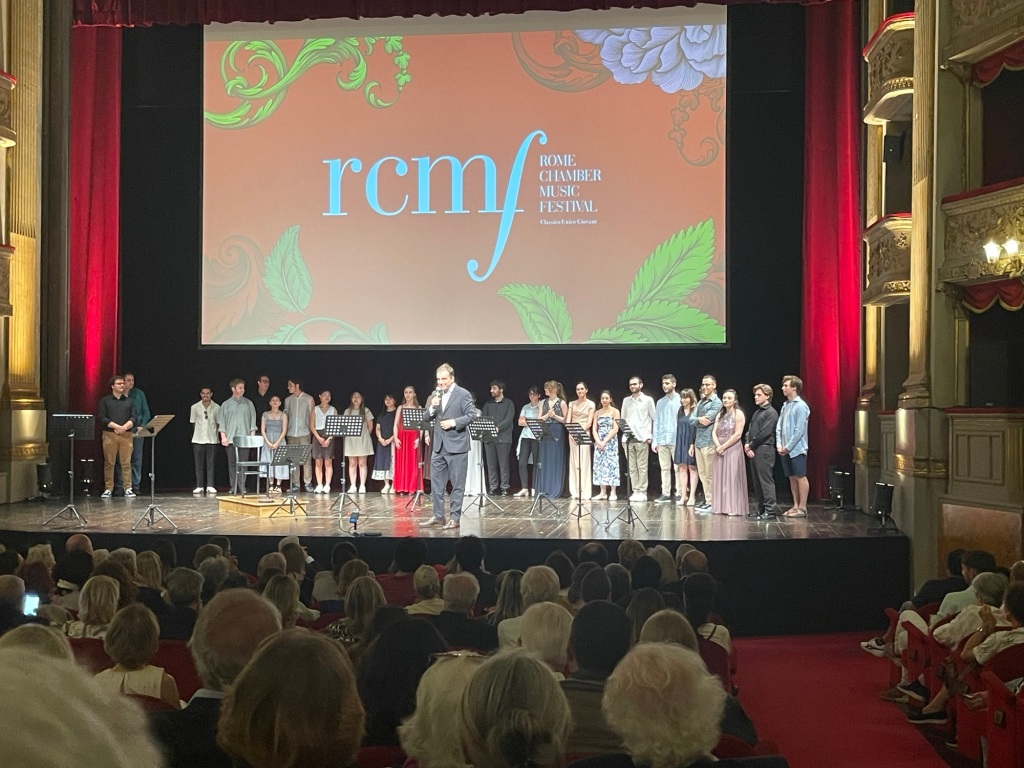

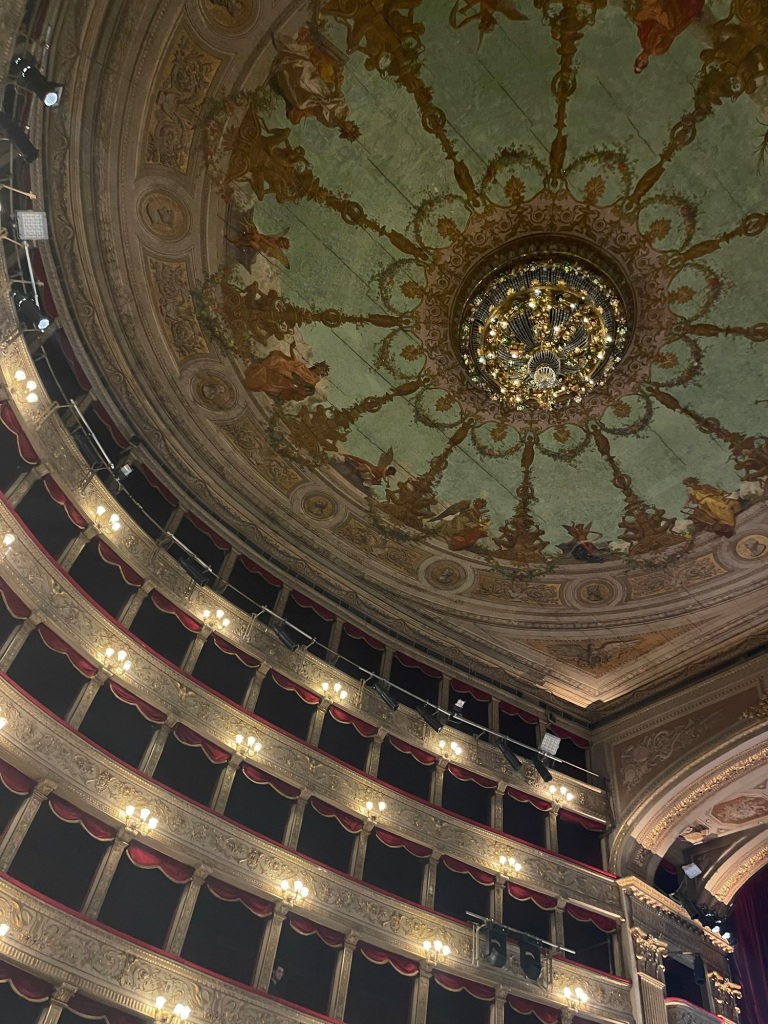
One of the oldest theatres in Rome, it was constructed in 1731 and inaugurated on 31 January 1732 with Berenice by Domenico Sarro (Trani 24 dicembre 1679 Napoli 26 aprile 1744). It is built over part of the curia section of the Teatro di Pompei . This curia was the location of the assassination of Julius Caesar.
The theatre was commissioned by the Sforza-Cesarini family and designed by the architect Gerolamo Theodoli , with the auditorium laid out in the traditional horseshoe shape. Duke Francesco Sforza-Cesarini, who ran the Argentina Theatre from 1807 to 1815, was a “theatre fanatic” who continued until his death to run up debts.Rossini’s ‘The Barber of Seville ‘ was given its premiere here on 20 February 1816, just after Duke Francesco’s death and, in the 19th century, the premieres of many notable operas took place in the theatre, including Verdi’s I due Foscari on 3 November 1844 and La battaglia di Legnano on 27 January 1849

8 June 1810 Zwickau 29 July 1856 (aged 46) Bonn
Schumann composed his piano quintet in just a few weeks in September and October 1842, in the course of his so-called Year of Chamber Music. Before 1842 Schumann had completed no chamber music at all, with the exception of an early piano quartet composed in 1829. Following his marriage to Clara in 1840, Schumann turned to the composition of songs, chamber music and orchestral works. During his year-long concentration in 1842 upon chamber music he executed the three string quartets, Op. 41, the piano quintet, Op. 44; the piano quartet, Op. 47; and the Phantasiestücke for piano trio, Op. 88. Schumann’s work in that year was buoyant in character;
Schumann had begun his career primarily as a composer for the keyboard; after his detour into writing for string quartet, according to Joan Chisell, the “reunion with the piano” which the piano quintet provoked gave “his creative imagination … a new lease on life.”
Schumann dedicated the piano quintet to his wife Clara . She was due to perform the piano part in the first private performance of the quintet on the 6th December 1842 at the home of Henriette Vogt and her husband Carl.However she fell ill and Felix Mendelssohn stepped in, sight-reading the “fiendish” piano part.[5]Mendelssohn’s suggestions to Schumann after this performance led to revisions to the inner movements, including the addition to the third movement of a second trio.
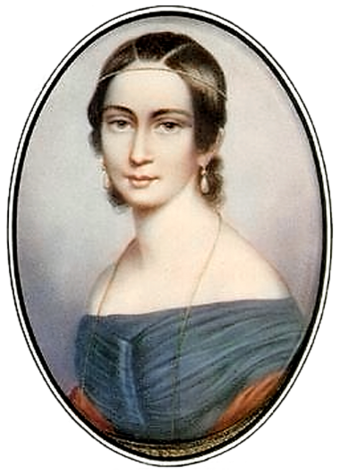
Clara Schumann (née Wieck) in 1838. Robert Schumann dedicated the quintet to Clara, and she performed the piano part in the work’s first public performance in 1843.
Clara Schumann did play the piano part at the quintet’s first public performance, which took place on the 8th January 1843 at the Leipzig Gewandhaus . Clara pronounced the work “splendid, full of vigor and freshness.” and often performed the quintet throughout her life.A notable performance came in 1852, when Schumann asked that the younger pianist Julius Tausch replace Clara in the quintet, explaining that “a man understands that better.” Franz Liszt heard the piece performed at Schumann’s home in 1848 and described it as “somewhat too Leipzigerisch,” a reference to the conservative music of composers from Leipzig, especially Felix Mendelssohn . Schumann took enormous offense at this remark, especially because Mendelssohn, who was a great friend of Schumann’s and whom Schumann somewhat idolised, had died only a year earlier. By some accounts Schumann rushed at Liszt and seized him by the shoulders. Liszt eventually apologised.Schumann did not forget Liszt’s offhanded insult, and mentioned it several times in letters to Liszt. Liszt’s relationship with the Schumanns was never entirely mended.

Brahms in 1889
7 May 1833,Hamburg 3 April 1897 (aged 63) Vienna
The two Serenades, Op. 11 and 16, represent early efforts by Brahms to write orchestral music. They both date from after the 1856 death of Robert Schumann when Brahms was residing in Detmold and had access to an orchestra.
Brahms had a goal of reaching Beethoven’s level in writing symphonies, and worked long and hard on his first symphony , completing it only in 1876 when he was 43 years old. As preliminary steps in composing for orchestra, he chose early on to write some lighter orchestral pieces, these Serenades. The first serenade was completed in 1858. At that time, Brahms was also working on his Piano Concerto n. 1 . Originally scored for wind and string nonet and then expanded into a longer work for chamber orchestra, the serenade was later adapted for orchestra;Brahms completed the final version for large orchestra in December 1859.In the orchestration of the Concerto Brahms had solicited and got a great deal of advice from his good friend Joseph Joachim . For this Serenade Joachim also gave advice, although to a lesser extent.The first performance of the Serenade, in Hanover on 3 March 1860, “did not go very well” in Brahms’s opinion,[7] but evidently the unusually large audience of 1,200 did not notice any mistake during the performance. At the end, applause “persisted until I came out and down in front.” After every piece in the concert “the audience was shouting.”This was a vastly better reception than the Piano Concerto had in either of its first two performances. But at its third performance, 24 March, also in Hamburg, it had been a success, perhaps not to the same degree as the Serenade.
The Serenade consists of six movements
- Allegro molto
- Scherzo . Allegro non troppo – Trio. Poco più moto
- Adagio
- Menuetto 1 – Menuetto II
- Scherzo. Allegro – Trio
- Rondo . Allegro
Scorings for Serenade 1 are:
- Nonet: flute, 2 clarinets in A (movements I, V, VI) and B flat (movements II, III, IV), bassoon, horn, violin, viola, cello, double bass
- Orchestra: 2 flutes, 2 oboes, 2 clarinets (as in the nonet}, 2 bassoons, 4 horns, 2 trumpets, timpani, strings (violins I and II, viola, cello, double bass)